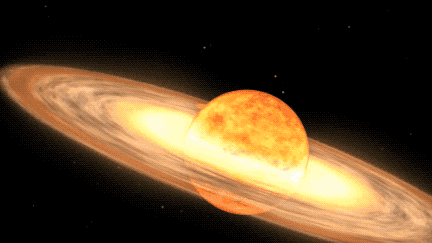2024 Nova Outburst
A Starry Display: Observing a Nova Explosion in 2024
A glimpse into the vast and dynamic universe is provided via stargazing. Skywatchers may be in for a unique treat this year (2024) – a nova outburst! This blog post discusses the fascinating occurrence that is predicted to occur in the constellation Corona Borealis, explores the science behind novae, and offers advice on how to increase your chances of seeing this celestial extravaganza.
2024 Nova Outburst
Table of Contents

Identifying Supernovae vs. Novae and How to Interpret Them
2024 Nova Outburst
Two phrases are frequently used interchangeably when discussing star explosions: novae and supernovae. Even though they both portray stars reaching pivotal moments in their lives, they are very different from one another.
- Supernovae: represent the magnificent displays of star death. Massive stars can momentarily outshine a whole galaxy because to their powerful explosions, which ultimately destroy the star. Supernovae are exceedingly uncommon and erratic.
- Novae: These are less spectacular but no less interesting occurrences. A white dwarf, the collapsed core of a once-massive star, extracts hydrogen-rich gas from its large companion star in binary star systems, where they occur. When the amount of this stolen hydrogen builds up to a certain threshold on the surface of the white dwarf, a rapid thermonuclear explosion occurs. For a brief period, this explosion outshines the entire system and produces a “new star” that may be seen in the night sky.
2024 Nova Outburst
Compared to supernovae, novae have far less energy and do not wipe out a star system. They can, however, be very dramatic, briefly becoming much brighter before gradually fading over the course of weeks or months.
T Coronae Borealis: An Expected Recurrent Nova Eruption in 2024
2024 Nova Outburst
Skywatchers have a unique opportunity this year. A nova eruption in the Corona Borealis constellation (T CrB) is predicted by astronomers. What distinguishes this occurrence from others? Since T CrB is a recurring nova, it is expected to erupt once more in the future. Astronomers estimate that this binary system may have another outburst between February and September of 2024. The last known outburst for this system was in 1946.
2024 Nova Outburst
There are two main reasons to be excited by T CrB’s outburst:
- Relatively Frequent Occurrence: T CrB provides a unique opportunity to see a recurrent nova in action, in contrast to most novae, which are one-time occurrences.
- Possible Visibility: Forecasts indicate that the nova outburst would peak at a brightness similar to that of Polaris, the North Star. This indicates that, in contrast to many previous novae, it might be visible to the unaided eye in optimal viewing circumstances.
Getting Ready for the Starry Display: Increasing Y our Prospects of Observing the Nova
2024 Nova Outburst
Here are some pointers to increase your chances of seeing this uncommon astronomical occurrence if you’re keen to see it:
- Get away from the City Lights: We can no longer view faint celestial objects due to light pollution. Look for a place where there isn’t much light pollution, preferably in a rural area or a dark sky preserve.
- Time Is Everything: Look up at the sky at night in February and September of 2024. Vigilance is essential because the precise date of the outburst is unpredictable.
- Find the North Pole: Learn about the constellation known as the Northern Crown, or Corona Borealis. This dim starry semicircle indicates the position of the impending nova eruption. You can find the constellation with the aid of star charts and astronomy applications.
- The Night is on Your Side: Give your eyes enough time to become accustomed to the darkness. It may take a few minutes for the faint brightness of the nova to become completely apparent.
- Improving the View: Binoculars or a small telescope can provide a magnified view of the nova, enabling you to better appreciate its nuances even if it may be visible with the unaided eye.
A Heavenly Delight Is Waiting! Don’t Pass Up This Chance
2024 Nova Outburst
An amazing phenomenon that lets us see the dynamic processes taking place inside double star systems is a nova outburst. For those who enjoy the night sky, amateur astronomers have a rare opportunity in 2024 when the T CrB outburst may be visible. With a little perseverance and these pointers, you might just get to see the birth of a “new star” in the night sky! Recall that if you miss the nova’s zenith, it may still be visible for a few weeks as it progressively dims. So gather your stargazing friends, go outside on a clear night, and be ready to be astounded by this amazing display of the heavens!


